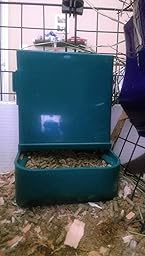Transforming your backyard into a birdwatcher’s paradise starts with a well-placed feeder, but it doesn’t end there. To truly attract a vibrant array of feathered friends and enjoy hours of captivating birdwatching, you need to design a haven around your feeder. This means creating a space that provides food, water, shelter, and safety, enticing birds to linger and making your yard their preferred hangout spot. Let’s explore how to craft the perfect birdwatching haven.
Choosing the Right Location for Your Feeder

The placement of your feeder is paramount. Avoid placing it too close to windows to prevent collisions. Ideally, position it at least 3 feet from any glass surfaces. Similarly, avoid locations frequented by cats or other predators. Consider the prevailing winds; a sheltered spot will protect both the feeder and its contents from the elements. A location offering some natural cover, like a nearby bush or tree, will also provide birds with a safe escape route and a sense of security while feeding.
Providing Diverse Food Sources
Different birds have different dietary needs. Offering a variety of feeders and food types will attract a greater diversity of species. Consider these options:
- Tube feeders: Perfect for smaller birds like finches and chickadees, these usually hold sunflower seeds or nyjer seeds.
- Platform feeders: These open feeders are ideal for larger birds like doves and jays, and can accommodate a range of foods.
- Suet feeders: These provide a high-energy food source, particularly beneficial during winter. Suet attracts woodpeckers, nuthatches, and other insectivores.
- Nectar feeders: For hummingbirds, these feeders require regular cleaning to prevent mold growth.
Remember to clean your feeders regularly to prevent the spread of disease. Use a solution of mild soap and water, and rinse thoroughly before refilling.
Creating Essential Shelter
Birds need protection from harsh weather and predators. Consider incorporating these elements into your bird-friendly design:
- Dense shrubs and bushes: These provide excellent cover for birds to escape danger and rest.
- Evergreen trees: Offer year-round protection from the elements, providing shelter in winter and shade in summer.
- Birdhouses: Provide safe nesting sites for cavity-nesting birds.
- Brush piles: A natural looking pile of branches and twigs offers shelter for ground-feeding birds and small mammals.
The Importance of Water

Access to fresh water is crucial for birds, especially during hot weather. Consider:
- Bird bath: Choose a shallow bird bath to prevent drowning. Add rocks for birds to perch on while drinking and bathing.
- Dripper: A dripper adds movement and sound, attracting birds and keeping the water fresh.
- Regular cleaning: Keep the water source clean and free of algae and debris.
Landscaping for Bird Safety and Attraction
Careful landscaping enhances your birdwatching haven. Native plants are particularly beneficial because they provide food and shelter tailored to local bird species. Avoid using pesticides and herbicides, as these can harm birds and their food sources. Consider planting:
- Berry-producing shrubs: Provide a natural food source for many birds.
- Seed-bearing plants: Offer a valuable food source throughout the seasons.
- Trees with nuts: Provide sustenance for larger birds.
Adding Visual Appeal

While functionality is key, don’t neglect aesthetics. Think about the overall look of your birdwatching area. Consider incorporating elements like:
- Natural stone pathways: Offer a pleasing contrast to the greenery.
- Ornamental grasses: Add texture and movement to the space.
- Comfortable seating: Allows for relaxed birdwatching.
Observation and Adaptation
Observe which birds are visiting your haven and what they seem to prefer. Adjust your offerings accordingly. If you notice a particular type of bird isn’t frequenting your feeders, consider adding a food type they prefer or adjusting the location of your feeder. The key is to create a dynamic and responsive environment that caters to the needs of your feathered guests.
Enjoying Your Birdwatching Haven

Once your birdwatching haven is established, sit back, relax, and enjoy the show! Grab your binoculars and a field guide, and immerse yourself in the vibrant world of birds. Remember to be patient and respectful of the wildlife. By creating a welcoming and safe environment, you’ll be rewarded with countless hours of fascinating birdwatching experiences.
Creating a birdwatching haven is an ongoing process. Enjoy the journey of learning about the birds in your area and adapting your design to best suit their needs. Your efforts will be richly rewarded with the beauty and wonder of the avian world right in your backyard.